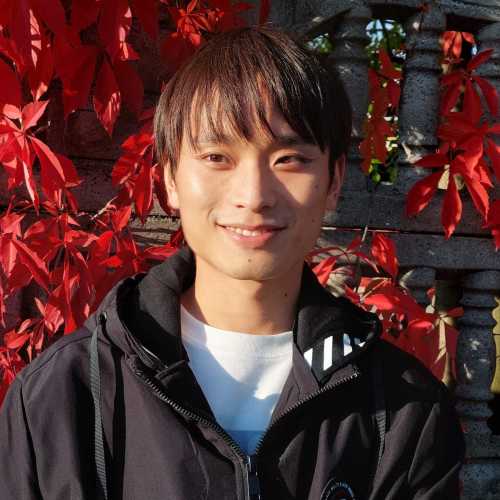Table Of Contents
- The Problem with Following Everyone Else
- Why the Standard Circuit Falls Short
- The Real Osaka: Off the Beaten Path
- Neighborhoods Worth Your Time
- Real Local Experiences vs. Tourist Performances
- Transportation: Moving Like a Local
- Seasonal Considerations for Off-Path Exploration
- Food Culture Beyond the Headlines
- Architecture and Urban Planning
- Shopping Like a Local
- Day Trip Alternatives
- Practical Navigation Tips
- Weather and Seasonal Planning
- Building Cultural Understanding
- The Economics of Alternative Tourism
- Transportation Deep Dive
- Night Culture Beyond Dotonbori
- Practical Advice for Independent Exploration
- Technology and Apps for Local Exploration
- Seasonal Deep Dive: Year-Round Local Experiences
- Final Thoughts: Why This Approach Matters

Quiet, lantern-lit alleyway in Osaka at dusk with no visible tourists. Photo by Julien on Unsplash
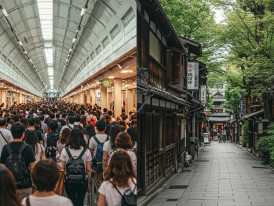
Crowded tourist area with long queues contrasted against an empty local street nearby
The Problem with Following Everyone Else
I've lived in Osaka for thirty-two years, and I can tell you exactly what's wrong with most visitors' itineraries: they're following the same beaten path that every other traveler has worn smooth. While crowds queue for hours at Osaka Castle and the Umeda Sky Building, I'm three blocks away discovering places that actually matter.
When you visit Japan and find yourself exploring this incredible city of Osaka, Japan, you'll quickly discover that some of the most rewarding experiences lie just a stone's throw away from the usual tourist spots that crowd every Japanese itinerary. While most visitors stick to the predictable circuit around Osaka Station and central Osaka, this bustling city reveals its true character in the quieter neighborhoods where authentic Japanese cuisine thrives in family-run establishments, where interesting architecture tells stories of both ancient Japanese samurai heritage and modern urban development, and where the genuine rhythm of local life unfolds far from the performed experiences designed for tourist consumption.
The irony isn't lost on me. Everyone comes here seeking "authentic Japan," then proceeds to do exactly what everyone else does. They photograph the same angles, eat at the same restaurants, and leave thinking they've experienced Osaka. They haven't.
Every foreign tourist arriving in Osaka Prefecture via bullet train seems to follow the same Japan itinerary: Osaka Aquarium, Spa World, and the standard beaten track attractions that fill guidebooks. But here's what they miss—while you're queuing with hundreds of others to view marine life behind glass walls that make the exhibits feel like scenes from Jurassic Park, there are working fishing ports just thirty minutes away where you can watch the actual daily catch being sorted and sold to restaurants that will serve it the same evening.
Most people who visit Osaka arrive at the main train station with a rigid Japan itinerary that prioritizes checking off famous attractions over understanding the place itself. They rush from their arrival platform straight to the Osaka Aquarium, then wonder why their experience of Osaka, Japan, feels so disconnected from the cultural immersion they expected.
What they don't realize is that Osaka Prefecture's most authentic experiences often happen in the transitional spaces—the neighborhoods surrounding train stations where locals live and work, the morning markets that supply the restaurants tourists will visit later, and the community centers where cultural practices continue regardless of whether visitors witness them. The aquarium shows you marine life behind glass, but the fishing communities along Osaka Bay show you how that marine life connects to daily culture, economy, and tradition in ways that no curated exhibition can convey.
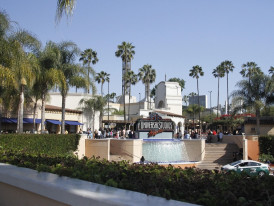
Long queues at Universal Studios Japan entrance gates Image by masbebet christianto from Pixabay
Why the Standard Circuit Falls Short
The Castle That Isn't Really a Castle
Let's start with Osaka Castle, shall we? Yes, it's historically significant. Yes, the grounds are beautiful during cherry blossom season. But the current structure is a 1931 concrete reconstruction, housing a museum with fluorescent lighting and gift shops.
You want real Japanese history? Walk ten minutes south to Shitennoji Temple, founded in 593 AD. It's been rebuilt multiple times too, but at least it functions as an actual Buddhist temple rather than a historical theme park.
The Sky Building That Touches Nothing
The Umeda Sky Building gets praised for its observation deck, and I'll grant you the views are decent. But you're paying premium prices to stand in a glass box with hundreds of other tourists, taking photos through reflective windows.
For a fraction of the cost, take the elevator to the top floor of any decent hotel bar in the area. Better drinks, fewer crowds, and you can sit down.
Universal Studios: The Ultimate Beaten Path
Universal Studios Japan represents everything wrong with tourist attractions. Expensive tickets, long lines, overpriced food, and an experience you could get in Florida or Singapore. If you're in Osaka for a day trip and spend it at a theme park, you've missed the point entirely.
Looking for a private city experience in Osaka?
Explore the city with a local who plans a private day just for you; no groups, no scripts.

Local worshippers performing traditional rituals at Sumiyoshi Taisha Photo by Buddy AN on Unsplash
The Real Osaka: Off the Beaten Path
Shinsekai: Beyond the Tourist Veneer
Everyone knows Shinsekai for its kushikatsu and the Tsutenkaku Tower. What they don't know is that the best parts of this neighborhood happen after dark, in the tiny bars where salarymen decompress and the street food vendors who've been perfecting their craft for decades.
Skip the famous kushikatsu chains. Instead, look for the places with no English menus and plastic stools. The elderly woman who runs the takoyaki stand near Imamiya Station has been there since 1987. Her octopus balls are perfect, and she'll teach you the proper way to eat them if you ask politely.
Hozenji Yokocho: The Alley Time Forgot
This narrow alley connecting Dotonbori to Nipponbashi looks like a movie set, but it's genuinely historical. The best kept secrets here aren't the restaurants everyone photographs—they're the tiny bars that seat six people maximum.
The area around Namba Yasaka Shrine perfectly illustrates this disconnect between tourist performance and local reality. Foreign visitors stop for photos at the shrine's distinctive lion-head stage, then immediately head to nearby game centers for photo booth sessions under garish neon lights, treating the neighborhood like a theme park. Meanwhile, the shrine continues its 1,400-year function as a community gathering place, hosting festivals and ceremonies that have nothing to do with tourism, preserving traditions that predate the bullet train by over a millennium.
You could spend half a day wandering from Universal's Wizarding World through Dotonbori's neon lights, taking the same photos as everyone else, or you could discover what locals value in their neighborhoods. Near Namba Yasaka Shrine, for instance, small family restaurants let you make your own okonomiyaki exactly how Osaka residents have been preparing it for generations, while the shrine's peaceful koi pond offers the kind of quiet reflection that no amount of flashing neon lights can provide. This is small-town intimacy within a major city—spaces where community connections matter more than entertainment value, where the pace allows for genuine cultural exchange rather than rapid tourist consumption.
Yamashina-ya serves the city's best sake selection in a space smaller than most people's bathrooms. The owner, Yamashina-san, speaks excellent English and can guide you through regional varieties you'll never find elsewhere.
![Tiny traditional bar interior with sake bottles lining the walls and a few customers at the counter. Filename: yamashina-ya-sake-bar.jpg]](https://images.surferseo.art/4159e7ee-b75c-47ef-85c7-3868cfece3eb.jpeg)
Sumiyoshi Taisha: The Shrine That Predates Tourism
While tour groups photograph themselves at Fushimi Inari's famous torii gates, Sumiyoshi Taisha sits quietly in the southern part of the city, receiving only locals and the occasional informed visitor. This is one of Japan's oldest Shinto shrines, and it shows in the best possible way.
The architecture is pure Japanese, predating Chinese influence. The grounds are expansive but never crowded. Most importantly, you can observe actual religious practices rather than Instagram performances.

Intimate sushi counter at a local restaurant with chef preparing fresh fish Photo by Harrison Chang on Unsplash
Neighborhoods Worth Your Time
Nippombashi: Electronics Without the Chaos
Everyone goes to Akihabara in Tokyo for electronics and anime culture. Osaka's Nippombashi district offers the same merchandise with half the crowds and better prices. The difference is striking.
Den Den Town stretches for several blocks, but unlike its Tokyo counterpart, you can actually browse without being pushed along by human traffic. The shop owners are more willing to negotiate, and several speak English well enough to explain technical specifications.
Kita-Hama: Business District After Hours
During business hours, Kita-Hama is all suits and briefcases. After 6 PM, it transforms into one of the city's best dining districts, with restaurants that cater to locals who know good food from corporate expense accounts.
The hidden gems here are the standing bars—tachinomi—where you can eat exceptionally well for reasonable prices. These places don't advertise; they rely on word-of-mouth and regular customers.
Tennoji: The Neighborhood Finding Itself
Tennoji used to be rough around the edges. Now it's gentrifying rapidly, which means you can still find authentic local experiences alongside newer establishments catering to a more diverse crowd.
The area around Tennoji Station has several excellent sushi restaurants that haven't yet discovered they can charge tourist prices. Sushi Kawano, in particular, offers omakase meals that would cost twice as much in more central locations.
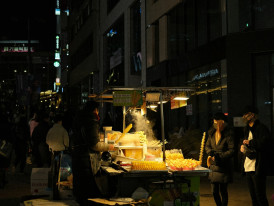
Local street food vendor in a residential area serving neighborhood customers Photo by Varta Matsakian on Unsplash
Real Local Experiences vs. Tourist Performances
Tea Ceremony: The Difference Between Show and Substance
Most tea ceremony experiences offered to tourists are abbreviated performances designed to fit busy schedules. Real tea ceremony practice is meditative, precise, and takes hours to appreciate properly.
Urasenke Foundation in Namba offers proper tea ceremony instruction for serious students. They don't cater to tourists looking for quick cultural experiences, which is exactly why you should seek them out.
The entertainment districts that dominate most visitors' evenings reveal how this big city's cultural depth gets oversimplified for tourist consumption. While crowds line up for Harry Potter-themed cafes and endless photo booth sessions in Amerikamura, traditional puppet theatre performances continue at small venues that have operated for generations, offering storytelling techniques that predate any modern entertainment by centuries.
You'll find more genuinely stunning places by wandering away from the beaten track entirely—quiet temple grounds where evening prayers happen regardless of tourist schedules, neighborhood festivals where local children perform traditional dances they've been practicing for months, and family-run establishments where the owner's grandmother still demonstrates crafts that connect directly to Osaka's artisan heritage, creating experiences that no themed entertainment complex can replicate.
Cooking Classes That Actually Teach
The cooking classes advertised to tourists typically focus on dishes you'll never make at home: elaborate sushi presentations or complex kaiseki preparations. What you need to learn is how to make proper dashi, how to select good ingredients, and how Japanese cooking techniques differ from what you know.
Street Food Beyond the Tourist Trail
Dotonbori's street food scene is legitimate, but it's also expensive and crowded. Better street food experiences happen in residential neighborhoods where vendors serve locals rather than tourists.
The takoyaki stand outside Nippombashi Station has been there for fifteen years. The owner knows his customers by name and adjusts spice levels according to individual preferences. This is how street food culture actually works.
What if your day in Osaka was planned by someone who knows it — and you?
City Unscripted matches you with a local host who creates a private experience based on your interests, not a set route.
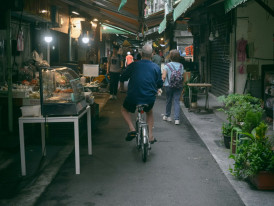
Cyclist riding through quiet residential street in Osaka with local shops and houses Photo by hayato togashi on Unsplash
Transportation: Moving Like a Local
Skip the Tourist Passes Sometimes
The Osaka Amazing Pass and similar tourist transportation deals seem like good value, but they actually encourage inefficient travel patterns. You end up visiting attractions because they're "included" rather than because they're worthwhile.
Regular IC cards (ICOCA or Suica) offer more flexibility and often cost less if you plan your routes sensibly. More importantly, they let you make spontaneous decisions about where to go based on what interests you rather than what's been paid for.
Bicycle Culture
Osaka is surprisingly bicycle-friendly, but most tourists never realize this because they're focused on train routes between major attractions. Renting a bicycle opens up neighborhood-level exploration that's impossible by train.
The bike rental shops near universities offer better rates and better-maintained bicycles than tourist-focused services. Students use these bikes for daily transportation, so the shops prioritize functionality over novelty.

Beautiful autumn colors in urban park setting with few visitors and natural lighting Photo by Doyle Shin on Unsplash
Seasonal Considerations for Off-Path Exploration
Cherry Blossom Season: Avoiding the Obvious
Spring brings cherry blossoms and crushing crowds to famous viewing spots. Osaka Castle Park becomes impassable. Maruyama Park in Kyoto is worse. But cherry trees bloom throughout the city, often in places with no crowds at all.
Kema Sakuranomiya Park runs along the Okawa River and offers several kilometers of cherry trees with space to actually enjoy them. Local families bring proper hanami setups: tarps, homemade food, and patience for the full experience.
Summer Festivals: The Local Version
Osaka's summer festival season includes several major events that draw huge crowds: Tenjin Matsuri, Sumiyoshi Matsuri, and others. These are legitimate cultural experiences, but they're also overwhelming for first-time visitors.
Neighborhood festivals happen throughout the summer with the same traditional elements—mikoshi portable shrines, traditional foods, festival games—but on a human scale. You can actually participate rather than just observe.
Autumn Colors in Unexpected Places
The famous autumn color destinations, temple gardens and mountain areas, are beautiful but predictably crowded. Osaka's urban parks provide excellent autumn viewing with the added benefit of normal human density.
Nagai Park combines botanical gardens, sports facilities, and walking paths through genuinely beautiful autumn landscapes. It's large enough that you can find solitude even during peak color season.
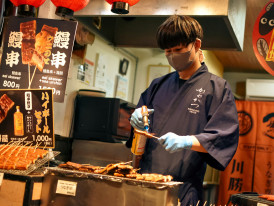
Traditional izakaya owner preparing fresh dishes behind the counter for longtime customers Photo by Mircea Solomiea on Unsplash
Food Culture Beyond the Headlines
The Sushi Making Class Myth
Most sushi-making classes teach you to make California rolls and other fusion dishes that have nothing to do with actual Japanese sushi culture. Real sushi preparation requires years of training and extremely fresh ingredients.
Instead of pretending you can learn sushi-making in two hours, focus on learning to appreciate good sushi. Sit at the counter at a proper sushi restaurant and observe the chef's techniques. Ask questions about fish selection and preparation methods.
Matcha Tea Culture
Tourist-oriented matcha tea experiences often focus on the ceremony aspects while ignoring the tea itself. Good matcha requires proper preparation techniques and high-quality powder that costs significantly more than most visitors expect.
Visit an actual tea shop where locals buy matcha for home use. The staff can explain quality differences and preparation methods that matter for daily tea drinking rather than ceremonial performance.
Izakaya Culture Done Right
The izakaya (Japanese pub) concept has been exported globally, but most tourist-oriented versions miss the social dynamics that make these places important in Japanese culture. Real izakaya serve as informal social clubs for regular customers.
Find an izakaya that's been operating for decades in a residential neighborhood. The owner will likely speak limited English, but the food will be better and the prices fairer than tourist-oriented establishments.
Tip
We match you with the right host, not just any guide.Want to experience the real Osaka with someone who lives there?
A fully private experience, planned and led by a local host who tailors the day to you
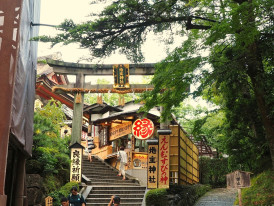
Neighborhood Buddhist temple with traditional architecture integrated into daily community life Photo by ww song on Unsplash
Architecture and Urban Planning
Modern Architecture Worth Seeing
Osaka's modern architecture goes far beyond the obvious tourist attractions. The city has been rebuilding continuously since World War II, creating architectural layers that tell the story of Japan's economic development.
The Nakagin Capsule Tower gets attention in Tokyo, but Osaka has equally interesting examples of experimental architecture that aren't on tourist circuits. The residential complexes around Senri New Town represent post-war urban planning at its most ambitious.
Traditional Architecture That Functions
Most traditional architecture open to tourists has been converted to museums or gift shops. For buildings that still serve their original purposes, you need to look beyond the obvious destinations.
Working Buddhist temples, neighborhood shrines, and older residential districts preserve architectural traditions within their natural context. These buildings wear their age naturally rather than being preserved as historical artifacts.
Shopping Like a Local
Markets That Serve Neighborhoods
Kuromon Ichiba Market gets all the tourist attention, but its transformation into a tourist attraction has changed its character completely. Prices are higher, vendors speak primarily English, and the goods are selected for visitor appeal rather than local use.
Visit Sumiyoshi or Nippombashi neighborhoods for markets that still function as community gathering places. These markets serve local customers first, which means better prices, fresher ingredients, and vendors who know their products intimately.
Department Stores vs. Local Shops
Department stores like Hanshin and Daimaru offer convenient one-stop shopping, but their selection caters to mainstream tastes rather than unique finds. The basement food floors (depachika) are worth visiting, but the rest is fairly standardized.
Small specialty shops scattered throughout residential neighborhoods offer unique products and knowledgeable service. These shops survive because they provide something specific that chain stores cannot.
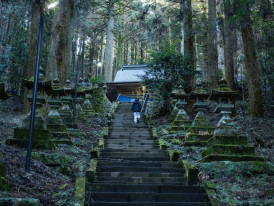
Scenic mountain temple in Wakayama with few visitors and natural forest setting Photo by Kouji Tsuru on Unsplash
Day Trip Alternatives
Beyond Kyoto and Nara
Most day trip advice from Osaka points visitors toward Kyoto or Nara, which are undeniably beautiful but also extremely crowded. Less obvious destinations offer equally rewarding experiences with more reasonable visitor densities.
Wakayama Prefecture is accessible by train from Osaka and offers mountain temples, coastal scenery, and traditional hot springs without international tour groups. The journey itself becomes part of the experience rather than something to endure.
Local Day Trip Mentality
When Osaka residents take day trips, they're looking for specific experiences rather than checking off famous locations. They might travel an hour to visit a particular restaurant, or to see seasonal flowers at their peak bloom.
This approach requires more research and planning, but it results in more memorable experiences. You're visiting places for their intrinsic qualities rather than their reputation.
Ready to plan your perfect day in Osaka?
Start your experience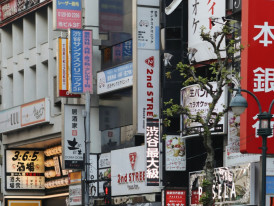
Local area with primarily Japanese signage and few English translations Photo by Praewthida K on Unsplash
Practical Navigation Tips
Reading the Urban Landscape
Osaka's street layout follows logical patterns once you understand the underlying geography. The city developed around rivers and historical trading routes, which explains the seemingly random street alignments in older districts.
Learning to read these patterns helps you navigate without constant reference to maps. More importantly, it helps you understand why certain neighborhoods developed particular characteristics.
Language Considerations
English signage in tourist areas creates a false impression of how much English is spoken elsewhere in the city. Moving beyond the beaten path requires basic Japanese language skills or creative communication methods.
Translation apps help with written text, but spoken communication requires patience and creativity. Most Osaka residents are helpful when they understand what you're trying to accomplish.
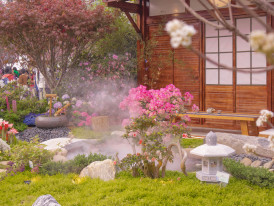
Steaming outdoor hot spring with snow-covered rocks and peaceful winter atmosphere Photo by kinya jones on Unsplash
Weather and Seasonal Planning
Summer Survival Strategies
Osaka summers are notoriously humid and hot. Tourist attractions become almost unbearable during peak afternoon hours, but this is when locals retreat to air-conditioned spaces or shaded areas.
Underground shopping complexes connect many central areas and provide climate-controlled environments for walking longer distances. These aren't tourist attractions, but they're essential infrastructure for summer comfort.
Winter Opportunities
Winter tourism to Osaka is lighter, which creates opportunities for better experiences at popular locations. Temple and shrine visits are more contemplative without crowds, and restaurant reservations are easier to secure.
Hot springs (onsen) within Osaka's reach become particularly appealing during cold weather. The contrast between cold air and hot water intensifies the relaxation effect.
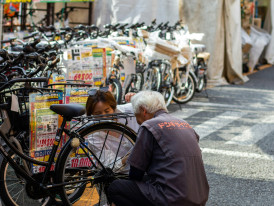
Local behavioral norms being demonstrated in traditional neighborhood setting Photo by Archer Hume on Unsplash
Building Cultural Understanding
Beyond Surface-Level Culture
Most cultural experiences packaged for tourists focus on easily observable aspects of Japanese culture: clothing, food presentation, ritual movements. Real cultural understanding requires observing social interactions and daily routines.
Spend time in spaces where locals gather naturally: public baths, community centers, local festivals, or neighborhood associations. These environments reveal cultural values that aren't performed for outsiders.
Respectful Observation
Moving off the beaten path requires greater cultural sensitivity because you're entering spaces not designed for tourist consumption. Your behavior reflects not just on you, but on all foreign visitors who might follow.
Pay attention to how locals behave in different settings. Volume levels, photography etiquette, and personal space expectations vary significantly between tourist areas and neighborhood spaces.
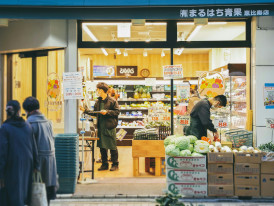
Local business owner investing profits back into community through local suppliers and employees Photo by HONG FENG on Unsplash
The Economics of Alternative Tourism
Supporting Local Businesses
Tourist-oriented businesses often have international ownership or management, which means tourism revenue doesn't necessarily benefit local communities. Seeking out locally-owned establishments has broader economic impact.
Local restaurants, shops, and service providers reinvest profits within their communities. Your spending becomes part of the local economic ecosystem rather than extractive tourism.
Value vs. Price
Experiences off the beaten path often cost less than tourist attractions while providing more value. For example, a neighborhood restaurant meal costs a fraction of theme park food while being infinitely more satisfying.
The time investment is different, too. Tourist attractions pack experiences into predetermined time slots, while local exploration happens at natural rhythms.
Transportation Deep Dive
Train Etiquette and Local Lines
The major train lines connecting tourist attractions are crowded and expensive. Local lines serve residential areas and often provide more interesting views of daily life.
Rush hour etiquette is crucial if you're traveling during commuter times. Stand right on escalators, remove backpacks in crowded cars, and avoid blocking doors.
Walking vs. Transit
Many neighborhoods are best explored on foot, but the walking distances between interesting areas can be significant. Learning to combine walking with strategic transit use opens up more exploration possibilities.
Osaka's flat geography makes walking easier than in hillier cities, but summer heat and winter cold affect comfortable walking distances substantially.
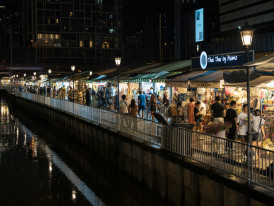
Authentic nightlife scene in business district with locals socializing after work Photo by Jin-Woo Lee on Unsplash
Night Culture Beyond Dotonbori
The Real Night Scene
Dotonbori at night is spectacular but artificial—a performance of nightlife rather than the genuine article. Real Osaka nightlife happens in business districts after work hours and residential areas where locals unwind.
While most visitors to Osaka city spend their Saturday nights packed into generic karaoke bars in Dotonbori, residents know that the real cultural experiences require just a short walk beyond the obvious entertainment districts. Take Minoo Park, for instance—this hillside overlooking the urban sprawl offers more than just autumn leaves and hiking trails. The area's rich history includes traditional sweet shops that have been perfecting their Japanese sweets recipes for generations, family-run establishments that close by evening because they cater to day hikers rather than party crowds. You won't find this mentioned in any Osaka museum display about local culture, but these quiet Saturday evening moments—watching the city lights emerge from a peaceful hillside vantage point while sampling momiji tempura (fried maple leaves) from vendors who've been there since before karaoke even existed—reveal more about authentic Osaka character than any curated cultural exhibition ever could.
Standing bars (tachinomi) and small izakaya provide authentic social experiences. These establishments thrive on regular customers and word-of-mouth recommendations rather than tourist foot traffic.
Late-Night Food Culture
The relationship between alcohol and food in Japanese culture differs from Western patterns. Late-night eating is social fuel rather than intoxication management.
Ramen shops stay open until dawn, not for drunk people but for shift workers, night-shift employees, and social groups extending their evenings. The food quality remains high regardless of the hour.
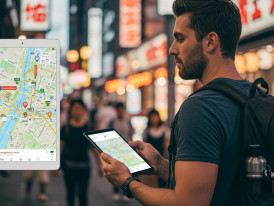
Well-prepared traveler with emergency contacts, translation apps, and local maps
Practical Advice for Independent Exploration
Research Methods
Moving beyond standard tourist information requires different research approaches. Japanese-language websites, local social media, and neighborhood newsletters contain information unavailable in English.
University area bulletin boards, community center announcements, and local newspaper event listings reveal activities designed for residents rather than visitors.
Emergency Preparedness
Exploring off the beaten path means potentially being in areas with limited English support. Prepare for basic communication needs and emergency situations.
Japanese emergency services are efficient but may have limited English capability. Having your location information available in Japanese characters prevents communication delays.
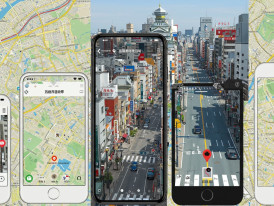
Comparison of mapping apps showing different levels of local detail and information.
Technology and Apps for Local Exploration
Beyond Google Maps
Google Maps works well for major destinations but lacks detail for neighborhood-level exploration. Japanese mapping apps like Yahoo! Map provide better information for local businesses and hidden locations.
Local review apps and social media platforms reveal neighborhood favorites that don't appear in English-language resources. These require translation but provide authentic local perspectives.
Communication Tools
Translation apps have improved dramatically, but they work better for written text than spoken conversation. Learn to use them effectively rather than completely relying on them.
Voice translation works reasonably well for basic needs, but cultural context and politeness levels require human judgment. Technology assists but doesn't replace cultural awareness.
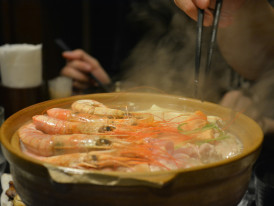
Traditional warm winter foods being enjoyed by locals in cozy restaurant setting Photo by Jerry Shen on Unsplash
Seasonal Deep Dive: Year-Round Local Experiences
Spring Beyond Cherry Blossoms
Cherry blossom season dominates spring tourism, but other seasonal flowers and cultural events provide equally rewarding experiences with fewer crowds.
Wisteria, azaleas, and early summer flowers create stunning displays in neighborhood parks and temple grounds. These bloom periods attract local enthusiasts rather than international tourists.
Summer Festival Deep Culture
Major summer festivals are cultural spectacles, but neighborhood festivals provide participatory experiences. Local matsuri (festivals) welcome visitor participation in traditional activities.
Festival preparation involves community members for weeks beforehand. Volunteering or observing these preparations reveals social structures and cultural values invisible during the main event.
Autumn Food Culture
Autumn in Osaka brings seasonal specialties that reflect the city's sophisticated food culture. These ingredients appear in neighborhood restaurants and local markets before reaching tourist-oriented establishments.
Persimmons, chestnuts, and seasonal fish varieties create menu changes that locals anticipate eagerly. Understanding these patterns helps you experience food culture from the inside.
Winter Warmth and Comfort
Winter most clearly reveals Osaka's comfort food culture. Hot drinks, warming foods, and cozy gathering spaces become essential rather than quaint cultural experiences.
Public baths (sento) and hot springs become more appealing during cold weather. These facilities serve practical and social functions that are most evident during winter months.
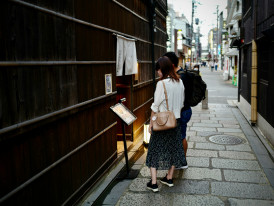
Local guide showing hidden gem to small group of interested visitors in authentic setting. Photo by Kazuo ota on Unsplash
Final Thoughts: Why This Approach Matters
The difference between tourist consumption and cultural engagement isn't just philosophical—it's practical. When you follow the beaten path, you're essentially paying premium prices for artificial experiences designed to confirm your existing expectations about Japan.
Osaka off the beaten path requires more effort, better preparation, and cultural sensitivity. But it rewards you with experiences that can't be replicated elsewhere, insights that change your understanding, and connections that last beyond your visit.
The city has incredible depth if you're willing to look beyond the surface. Most visitors barely scratch that surface, then leave thinking they've seen Japan. They've seen a performance designed for their consumption, not the place itself.
Every neighborhood in Osaka has layers of history, culture, and daily life that remain invisible to rushed tourism. The Ferris wheel and observation decks show you the city from above, but walking through residential streets shows you how it actually works.
The choice is yours: follow everyone else's path and get everyone else's experience, or invest the time to discover what makes this place unique. After thirty-two years here, I can tell you which approach provides lasting memories.
This isn't about avoiding crowds for the sake of exclusivity. It's about finding experiences that matter, places that function naturally, and people who aren't performing their culture for your consumption. That's where Osaka becomes itself rather than a destination.
The Osaka Experiences you'll remember most aren't the ones everyone talks about—they're the ones you discover when you stop following everyone else's map.
And if you want structured local guidance while maintaining this Osaka Experiences approach, consider Osaka Otaku tours that focus on genuine local culture rather than standard tourist circuits.
The best parts of Osaka are still here, waiting for visitors who care enough to look for them properly.
What if your day in Osaka was planned by someone who knows it — and you?
City Unscripted matches you with a local host who creates a private experience based on your interests, not a set route.
Want to experience the real Osaka with someone who lives there?
A fully private experience, planned and led by a local host who tailors the day to you









